Unit4 What can you do Part A 说课 课件 (共32张PPT)
文档属性
| 名称 | Unit4 What can you do Part A 说课 课件 (共32张PPT) |
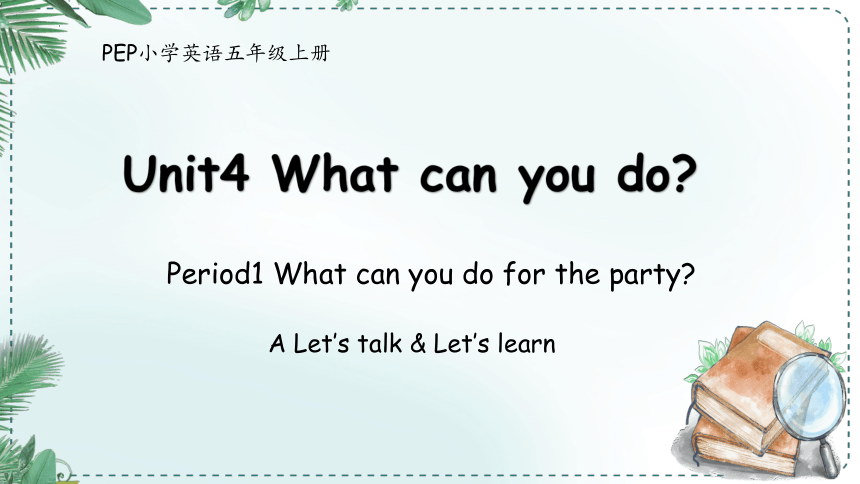
|
|
| 格式 | pptx | ||
| 文件大小 | 31.4MB | ||
| 资源类型 | 教案 | ||
| 版本资源 | 人教版(PEP) | ||
| 科目 | 英语 | ||
| 更新时间 | 2024-10-04 16:19:59 | ||
图片预览

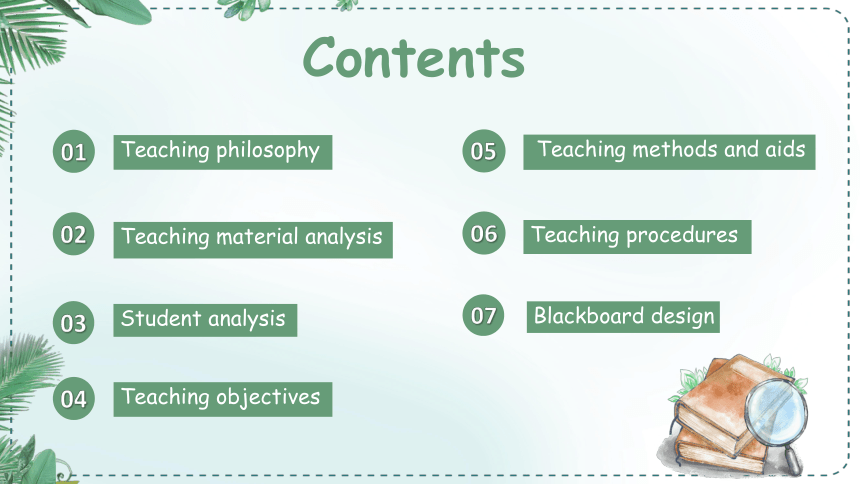
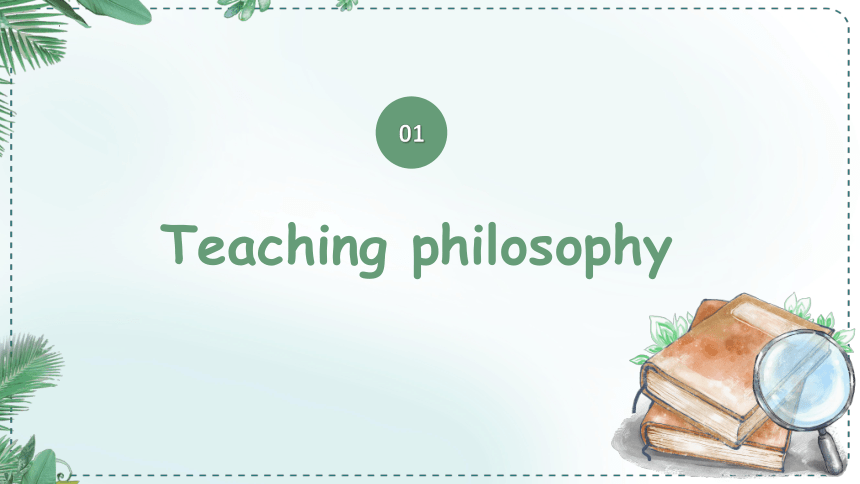
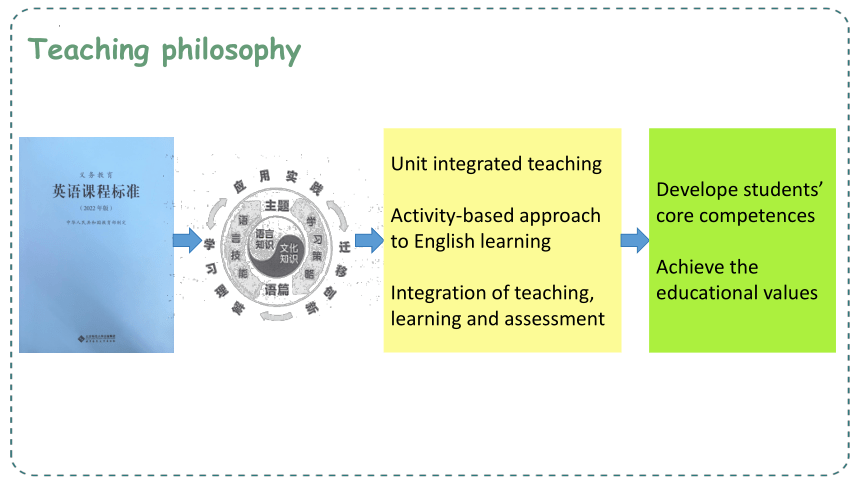
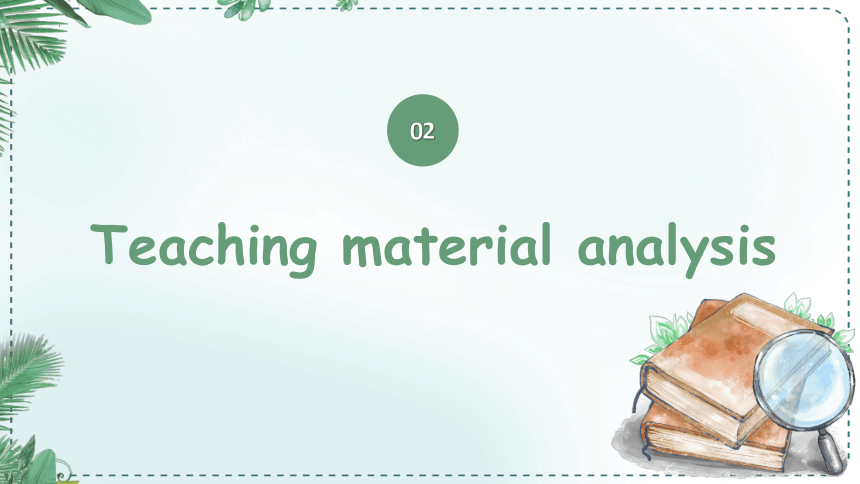
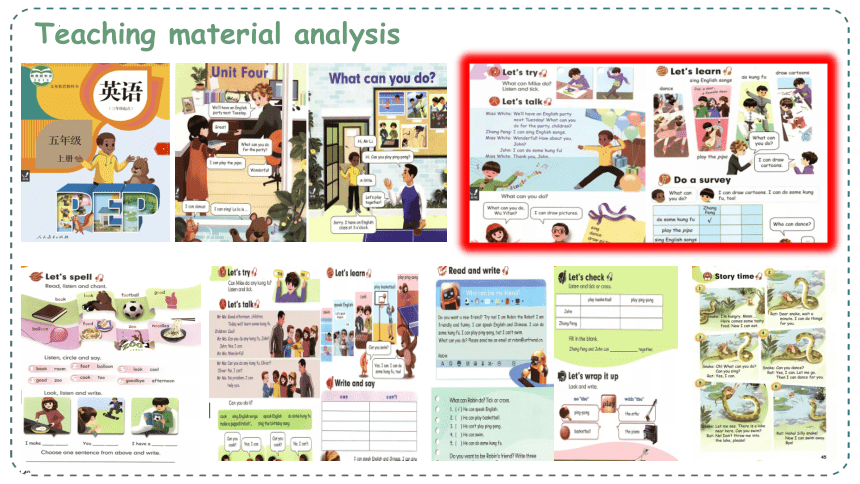
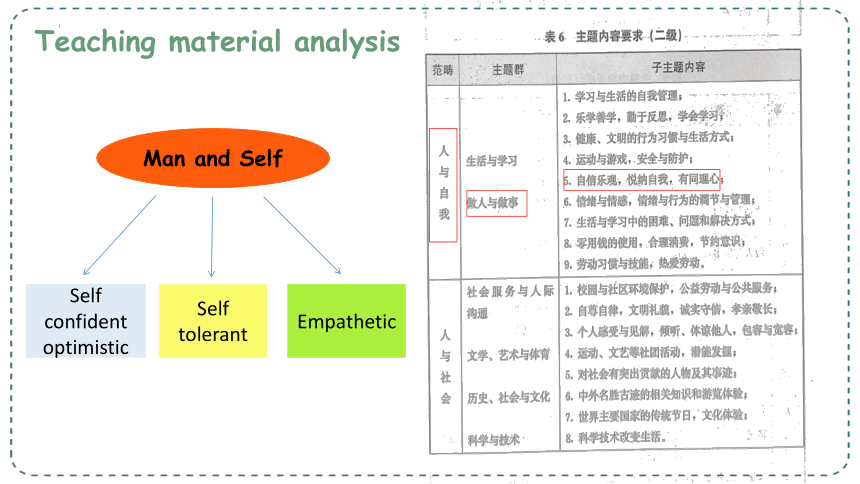
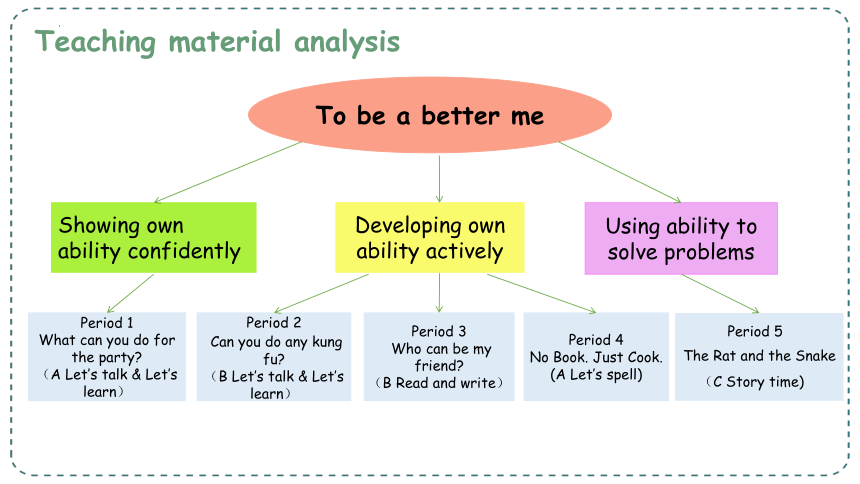
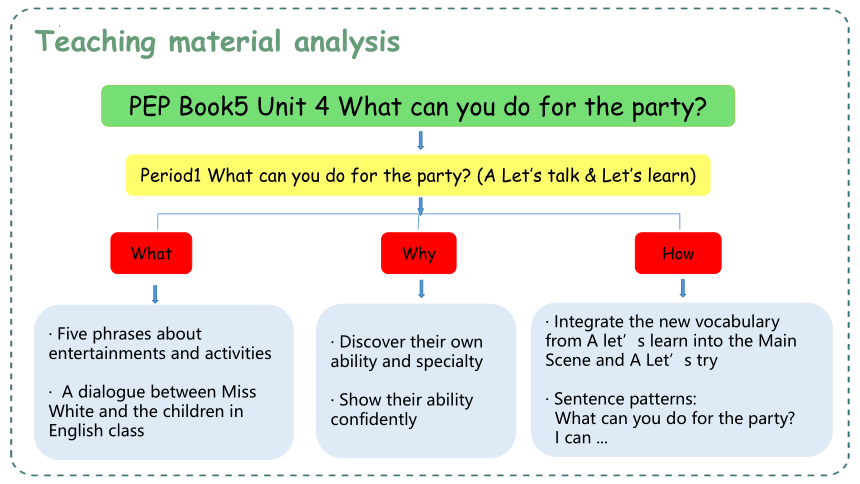
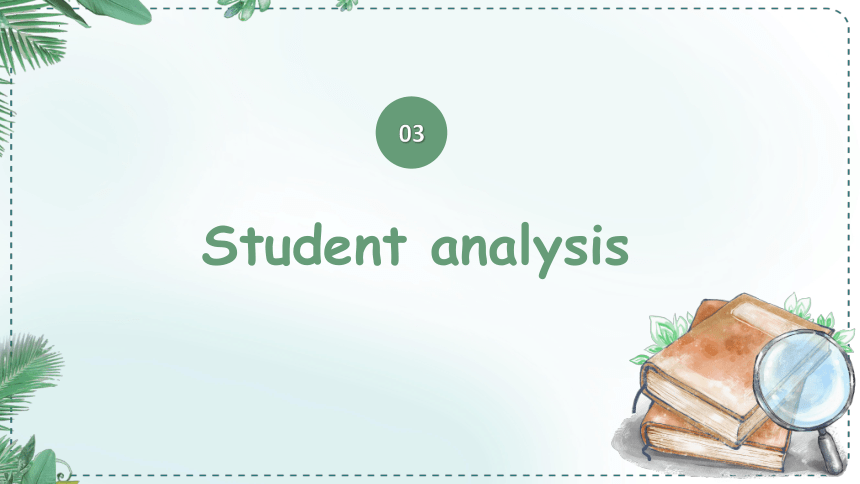

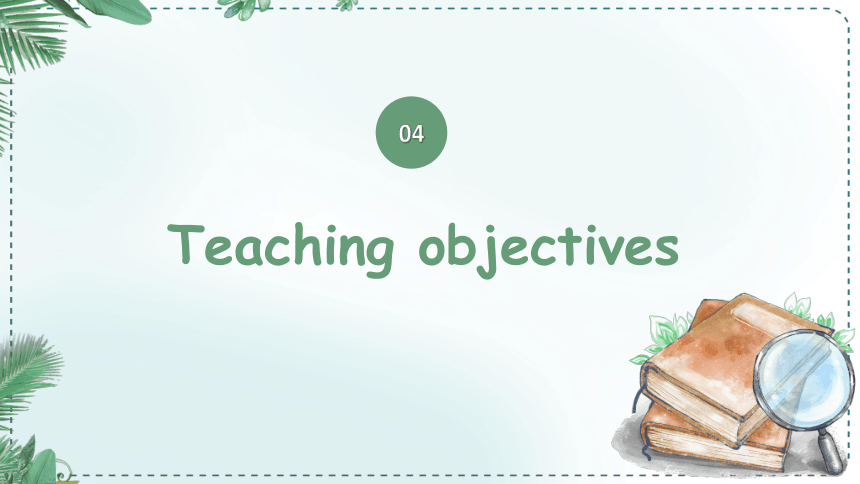
文档简介
(共32张PPT)
Unit4 What can you do
PEP小学英语五年级上册
Period1 What can you do for the party
A Let’s talk & Let’s learn
Student analysis
03
Teaching objectives
04
Contents
Blackboard design
07
Teaching philosophy
01
Teaching material analysis
02
Teaching methods and aids
05
Teaching procedures
06
Teaching philosophy
01
Teaching philosophy
Unit integrated teaching
Activity-based approach to English learning
Integration of teaching, learning and assessment
Develope students’ core competences
Achieve the educational values
Teaching material analysis
02
Teaching material analysis
Teaching material analysis
Man and Self
Self confident optimistic
Self tolerant
Empathetic
Teaching material analysis
To be a better me
Showing own
ability confidently
Using ability to solve problems
Developing own ability actively
Period 1
What can you do for the party
(A Let’s talk & Let’s learn)
Period 2
Can you do any kung fu
(B Let’s talk & Let’s learn)
Period 3
Who can be my friend
(B Read and write)
Period 4
No Book. Just Cook.
(A Let’s spell)
Period 5
The Rat and the Snake
(C Story time)
Teaching material analysis
PEP Book5 Unit 4 What can you do for the party
Period1 What can you do for the party (A Let’s talk & Let’s learn)
What
Why
How
· Five phrases about entertainments and activities
· A dialogue between Miss White and the children in English class
· Discover their own ability and specialty
· Show their ability confidently
· Integrate the new vocabulary from A let’s learn into the Main Scene and A Let’s try
· Sentence patterns:
What can you do for the party
I can ...
Student analysis
03
Student analysis
Life experience
Language ability
Learning ability
The topic of this lesson is highly relevant to students’life.
They may have great interest in talking and showing their own ability.
They are able to work in pairs and groups.
They may need help in making a new dialogue in a real life situation.
They have learned the simple present tense, general questions and what-question.
Students in Grade 5
Teaching objectives
04
Teaching objectives
Learning and understanding
Applying and practicing
Transferring and creating
To extract information about what the children can do for the party in the dialogue by viewing, thinking, listening and watching.
To make a new dialogue about what one can do for the party and give a report by using the target language in a real life situation.
To use the sentence patterns what can you do for the party I can... to ask and answer questions.
To discover their own ability and talk with others.
Teaching objectives
Key points
Difficult points
To extract information about what the children can do for the party in the dialogue by viewing, thinking, listening and watching.
To use the sentence patterns what can you do for the party I can... to ask and answer questions.
To discover their own ability and talk with others.
To make a new dialogue about what one can do for the party and give a report by using the target language in a real life situation.
Teaching methods and aids
04
01
02
03
Teaching methods and aids
Activity-based approach
Situational teaching
Multimedia computer
04
Self-exploration and group cooperation
Teaching procedures
04
Teaching procedures
Step 1
Step 2
Step 3
Step 4
Step 5
Step 6
Step 7
Lead-in
Pre-learning
While-learning
Post-learning
Summary
Assessment
Homework
Step1 Lead-in
Watch a video and have a free talk about the birthday party.
Purpose: To stimulate students’ learning interest.
Step2 Pre-learning
Purpose: To learn the core language by watching, viewing and listening.
To activate students’ background knowledge.
To lay a good foundation for the output.
Step3 While-learning
Purpose: To develope students thinking and speaking strategy.
While-learning
Purpose: To determine whether the students can extract information
accurately and use the new sentence pattern correctly.
To check the predition.
While-learning
Purpose: To internalize what the students have learned.
To develope students talking ability and pave the way for their language output.
Step4 Post-learning
Make a brief evaluation of the behaviour of the pupils and state reasons.
Purpose: To have a deep learning of the text.
Post-learning
Purpose: To face their own shortcomings and discover their own ability.
To learn to show themselves confidently.
To perceive the thematic meaning by themselves gradually .
Post-learning
Purpose: To solve the new real problems by using the target language.
To deepen the students’ understanding of the meaning.
To evaluate the effectiveness of teaching and learning.
Step5 Summary
Purpose: To help students consolidate their learning in time.
Step6 Assessment
Purpose: To test the effectiveness of both teacher’s teaching and students’
learning.
To improve teacher’s teaching in the next period.
Step7 Homework
Purpose: To guide students to put the target languages into practice.
To arouse students’ thinking and stimulate their potential.
Blackboard design
07
Blackboard design
Purpose: To help the kids to realize what they’ve learned clearly.
Thank you!
Unit4 What can you do
PEP小学英语五年级上册
Period1 What can you do for the party
A Let’s talk & Let’s learn
Student analysis
03
Teaching objectives
04
Contents
Blackboard design
07
Teaching philosophy
01
Teaching material analysis
02
Teaching methods and aids
05
Teaching procedures
06
Teaching philosophy
01
Teaching philosophy
Unit integrated teaching
Activity-based approach to English learning
Integration of teaching, learning and assessment
Develope students’ core competences
Achieve the educational values
Teaching material analysis
02
Teaching material analysis
Teaching material analysis
Man and Self
Self confident optimistic
Self tolerant
Empathetic
Teaching material analysis
To be a better me
Showing own
ability confidently
Using ability to solve problems
Developing own ability actively
Period 1
What can you do for the party
(A Let’s talk & Let’s learn)
Period 2
Can you do any kung fu
(B Let’s talk & Let’s learn)
Period 3
Who can be my friend
(B Read and write)
Period 4
No Book. Just Cook.
(A Let’s spell)
Period 5
The Rat and the Snake
(C Story time)
Teaching material analysis
PEP Book5 Unit 4 What can you do for the party
Period1 What can you do for the party (A Let’s talk & Let’s learn)
What
Why
How
· Five phrases about entertainments and activities
· A dialogue between Miss White and the children in English class
· Discover their own ability and specialty
· Show their ability confidently
· Integrate the new vocabulary from A let’s learn into the Main Scene and A Let’s try
· Sentence patterns:
What can you do for the party
I can ...
Student analysis
03
Student analysis
Life experience
Language ability
Learning ability
The topic of this lesson is highly relevant to students’life.
They may have great interest in talking and showing their own ability.
They are able to work in pairs and groups.
They may need help in making a new dialogue in a real life situation.
They have learned the simple present tense, general questions and what-question.
Students in Grade 5
Teaching objectives
04
Teaching objectives
Learning and understanding
Applying and practicing
Transferring and creating
To extract information about what the children can do for the party in the dialogue by viewing, thinking, listening and watching.
To make a new dialogue about what one can do for the party and give a report by using the target language in a real life situation.
To use the sentence patterns what can you do for the party I can... to ask and answer questions.
To discover their own ability and talk with others.
Teaching objectives
Key points
Difficult points
To extract information about what the children can do for the party in the dialogue by viewing, thinking, listening and watching.
To use the sentence patterns what can you do for the party I can... to ask and answer questions.
To discover their own ability and talk with others.
To make a new dialogue about what one can do for the party and give a report by using the target language in a real life situation.
Teaching methods and aids
04
01
02
03
Teaching methods and aids
Activity-based approach
Situational teaching
Multimedia computer
04
Self-exploration and group cooperation
Teaching procedures
04
Teaching procedures
Step 1
Step 2
Step 3
Step 4
Step 5
Step 6
Step 7
Lead-in
Pre-learning
While-learning
Post-learning
Summary
Assessment
Homework
Step1 Lead-in
Watch a video and have a free talk about the birthday party.
Purpose: To stimulate students’ learning interest.
Step2 Pre-learning
Purpose: To learn the core language by watching, viewing and listening.
To activate students’ background knowledge.
To lay a good foundation for the output.
Step3 While-learning
Purpose: To develope students thinking and speaking strategy.
While-learning
Purpose: To determine whether the students can extract information
accurately and use the new sentence pattern correctly.
To check the predition.
While-learning
Purpose: To internalize what the students have learned.
To develope students talking ability and pave the way for their language output.
Step4 Post-learning
Make a brief evaluation of the behaviour of the pupils and state reasons.
Purpose: To have a deep learning of the text.
Post-learning
Purpose: To face their own shortcomings and discover their own ability.
To learn to show themselves confidently.
To perceive the thematic meaning by themselves gradually .
Post-learning
Purpose: To solve the new real problems by using the target language.
To deepen the students’ understanding of the meaning.
To evaluate the effectiveness of teaching and learning.
Step5 Summary
Purpose: To help students consolidate their learning in time.
Step6 Assessment
Purpose: To test the effectiveness of both teacher’s teaching and students’
learning.
To improve teacher’s teaching in the next period.
Step7 Homework
Purpose: To guide students to put the target languages into practice.
To arouse students’ thinking and stimulate their potential.
Blackboard design
07
Blackboard design
Purpose: To help the kids to realize what they’ve learned clearly.
Thank you!
